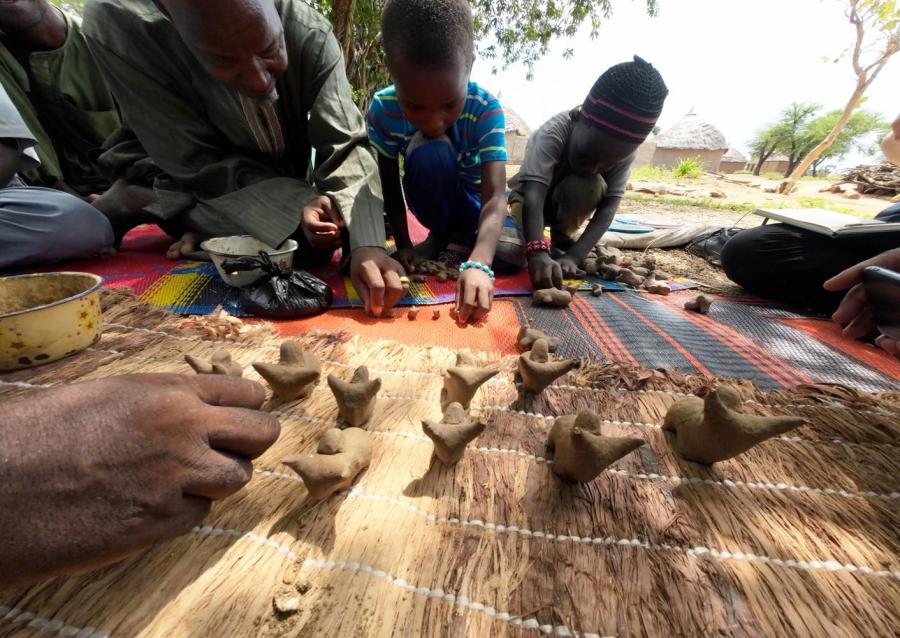By Daniel Chang YengPangaea 2002 ISBN 1-929-165-50-1
Kakuma/Turkana, a coffee table book of black and white photography, accomplishes something that has largely eluded journalists covering Africa: revealing the displacement that has been a primary by-product of the on-going civil war in Sudan. The precocious efforts of the now 18-year-old photographer Daniel Cheng Yang document hardships endured by south Sudanese refugees ensconced in the United Nations High Commissioner on Refugee’s (UNHCR) Kakuma Refugee Camp in Turkana, Kenya. This work illuminates not only the bureaucratic context of refugees’ lives, but also questions the effects of their massive presence upon their “hosts,” Kenya’s Turkana pastoralists, whose land the Kenyan government alienated on behalf of UNHCR. Within the nexus of contact between these bodies of increasingly sedentary pastoral peoples—one displaced from Sudan, their country of origin, and the other immobilized by the loss of cattle in cycles of drought and the inducement of humanitarian aid—Yang trains his eye on the displaced minors commonly known as the “Lost Boys of Sudan.” With such rich subject matter at hand, it is unfortunate that Yang’s publisher did not provide greater editorial oversight and research assistance to the young photographer.
Sensitized by his father, a Laotian refugee, to refugee issues, Yang’s visceral reaction to televized images of the Rwandan genocide compelled the then 15-year-old to petition the UNHCR for permission to document life in a refugee camp. Considered a “stable” and protracted refugee camp after more than 10 years of existence, Kakuma enjoys a level of notoriety in the Horn of Africa among refugees, donors, and journalists alike. Rather than plumb all facets of this operation, however, Yang and his inattentive editorial board were more comfortable exoticizing pastoral peoples and composing a lament for African refugees than providing a historically accurate and well-rounded, contemporary context for the predicaments his photographs ably depict. His partial knowledge of the socio-political contexts affecting both the refugees and Turkana people handicap the book’s educational possibilities.
For instance, Yang dates Sudan’s present civil war as 20 years old without mentioning it originated with the country’s independence from British colonialism. Likewise, he suggests that “Lost Boys” uniformly fled villages razed by Arab sorties; Human Rights Watch notes that the Sudan People’s Liberation Army (SPLA) extracted some boys for military training and mobilization, while the SPLA claims the mobilization was an education initiative. Yang limits review of the present conflict to its religious axis between the Islamic federal government in the north and Christians and animists in the south—without mention of the considerable oil, gold, and water resources central to the conflict and the government’s ability to continue the genocide. Informing the reader that “these are people who, in most cases, have never had contact with the outside world” masks the history of colonial and humanitarian interventions in both south Sudan and Turkana, which have, in part, produced the privations Yang seeks to document.
More to the photographic point—his words, partly, belie images that tip the reader off to an Africanized modernity: just check out the set of keys and cigarette lighters that ornament wizened Turkana women’s beaded necklaces. Yang’s preoccupation with the refugee as dehumanized victim and his misunderstanding of pastoralism as a failed enterprise has apparently eliminated coverage of other aspects of modernity that qualify Kakuma. These aspects include the extensive network of educational and social programs sponsored by non-governmental organizations (NGOs) that continue to pull children from Sudan, and the camp’s flourishing informal economy. In Kakuma, one can take in English premier league football or CNN on satellite television in refugee-owned shops, shop for knock-off hip hop gear, and place an international phone call.
The strength of Yang’s work lies in his straightforward documentation of the bureaucratic steps to becoming a refugee. He chaperones the reader on what could be a humanitarian junket in a UNHCR sports utility vehicle to view the most visible and skeletal framework of refugees’ existence: entrance into UNHCR’s Kenyan-Sudan border transit station, ration card registration, food shortages, lines at the water spigots, school feedings, and religious worship.
Of course, central to Yang’s work are the “Lost Boys” around whom the camp was founded in 1991. Their harrowing tale of displacement to Ethiopia and subsequent expulsion, which precipitated the arrival on foot of thousands in Kenya, garnered international media coverage and humanitarian response. Over 3,000 have been resettled to the United States in the last three years. Yang’s subjects have not been so fortunate. His full-page portraits cover their triumphs and hardships: leg prosthetics tossed to the courtside in a wheelchair basketball game, cavorting minors outside their group huts, and—for the lucky few—the airport-lounge moment prior to departure to the United States.
Despite the book’s shortcomings, Yang delivers a barebones snapshot of refugees’ and pastoralists’ resilience in an unforgiving desert environment. With what is, perhaps, his most compelling image—a young man bleeding to death on the desert floor—Yang also reminds us that conflicts do not always end at border-crossings. Such an empathetic connection to the issues will surely fuel Yang’s future work. As the Dalai Lama says in the book’s preface, “I am always especially encouraged when I come across such kindness and warm-heartedness towards others in one so young. I feel it bodes well for humanity’s future.” With the considerable humanitarian complex in and around Kakuma, which Yang chronicles, these are not “Africa’s Forgotten Peoples,” as the title would suggest. And Yang’s coverage might further ensure that they are not.
James A. Schechter is doctoral candidate in the department of anthropology at the University of Colorado at Boulder.

